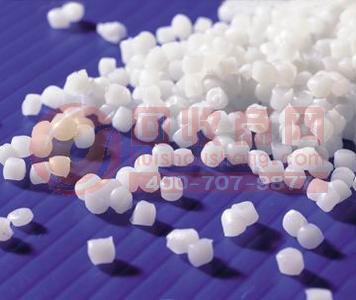
TPR is a thermoplastic elastomer. It is a versatile plastic. It is used for the handles and toothbrush handles that we usually use. Today we will carefully understand the key points of the TPR injection molding process. Thermoplastic elastomer (TPR) has high strength, high resilience, environmental protection, non-toxic safety, wide hardness range, etc. It has excellent processing performance, no need for vulcanization, and can be recycled to reduce costs.
Pay attention to the following points when molding TPR
1. Drying must be carried out before processing and the water content should be determined. The moisture content of TPR at high temperature is required to be 5% or less, or even 2% to 3%, so it is usually dried in a vacuum drying oven at 75 ° C to 90 ° C for 2 hours. The dried material must be properly sealed and stored to prevent the material from absorbing moisture from the air and losing the drying effect. For this reason, the drying chamber hopper can continuously provide the drying machine with dry hot material, which simplifies the operation, keeps the cleaning and improves the quality. Increasing the injection rate is advantageous.
The amount of charge for the drying hopper is generally 2.5 times that of the injection molding machine per hour. SBC-based TPEs are superior in color to most other TPR materials. Therefore, they only need a smaller amount of color masterbatch to achieve a certain color effect, and the resulting color is more pure than other TPR. In general, the viscosity of the masterbatch should be lower than the viscosity of the TPR because the melt index of the TPR is higher than that of the masterbatch, which will facilitate the dispersion process and result in a more uniform color distribution.
2. For SBS-based TPE, polystyrene-based vehicles are recommended.
(1) For TPR based on harder SEBS, polypropylene (PP) vehicle is recommended.
(2) For TPR based on softer SEBS, low density polyethylene or ethylene vinyl acetate copolymer may be used. For softer varieties, PP vehicles are not recommended because the hardness of the composite will be affected.
3. For some applications of encapsulated injection molding, the use of polyethylene (PE) vehicles may adversely affect the adhesion to the substrate. The injection molding machine barrel needs to be cleaned or removed before the newly purchased injection molding machine is used, or when it is necessary to change the product, change the raw materials, change the color or find decomposition in the plastic.
The cleaning barrel is generally cleaned by a heated barrel. Cleaning materials are generally made of plastic raw materials (or plastic recycled materials). For TPR materials, the transition wash can be replaced with the new material being processed.
4. In the process of molding the mold cavity, if the filling performance of the product is not good, the pressure drop is too large, the filling time is too long, the filling is not full, and the like, so that the product has quality problems. In order to improve the filling performance of the product during molding and improve the quality of the molded article, it can generally be considered from the following aspects:
(1) Change the other series of products of Keyue.
(2) Change the gate position.
(3) Change the injection pressure.
(4) Change the geometry of the part.
5. In the process of injection molding, whether the temperature is set accurately is the key to the appearance and performance of the product. Below are some suggestions for temperature setting during TPR processing.
(1) The temperature in the feed zone should be set fairly low to avoid blockage of the feed port and allow entrained air to escape. In order to improve the mixing state when using the color masterbatch, the temperature of the transition zone should be set above the melting point of the color masterbatch. The temperature in the zone closest to the injection nozzle should be set close to the desired melt temperature. Therefore, after testing, the TPR product usually sets the temperature in each zone as follows: the cylinder is 160 degrees Celsius to 210 degrees Celsius, and the nozzle is 180 degrees Celsius to 230 degrees Celsius.
(2) The mold temperature should be set high and the condensation temperature of the injection zone, which will avoid the contamination of the mold by moisture and the streaks on the surface of the product. Higher mold temperatures typically result in longer cycle times, but they improve the appearance of weld lines and articles, so the mold temperature range should be set between 30 and 40.
Fiberglass cloth has become a widely used material in various industries due to its exceptional strength, versatility, and heat resistance. This cloth is made from woven strands of fiberglass, resulting in a lightweight yet durable fabric. With its high tensile strength and resistance to chemicals, abrasion, and extreme temperatures, fiberglass cloth finds applications in a wide range of fields. It is commonly used in the manufacturing of composite materials, insulation, and protective coverings. The flexibility and moldability of fiberglass cloth make it an ideal choice for reinforcing structures, creating custom shapes, and providing insulation. Whether in construction, automotive, aerospace, or marine industries, fiberglass cloth offers a reliable and efficient solution for numerous applications.
Fiberglass Cloth,Fiber Glass Fabric,High Strength Fiberglass Cloth,Fiber Glass Fabric
Jinwu Glass Fiber Co., Ltd , https://www.jwnetwindows.com